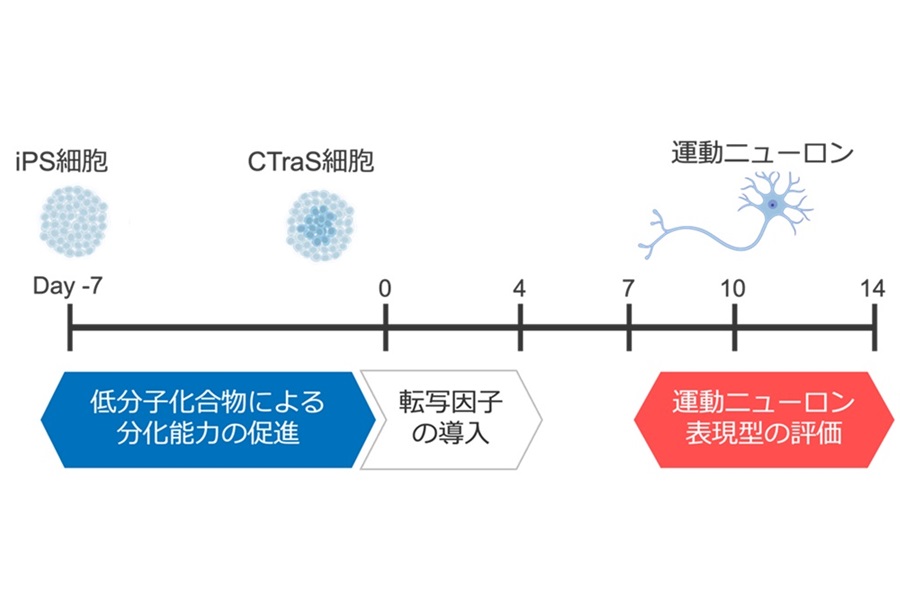Key Points:
- Development of a Novel Protocol for Efficient Induction of Lower Motor Neurons
We have developed a highly efficient protocol for the induction of lower motor neurons from human iPSCs, achieving an induction efficiency of approximately 80%. Compared to conventional methods, this approach accelerates differentiation while maintaining high reproducibility, making it a valuable tool for studying ALS pathology and drug screening.
- Replication ALS pathology
Lower motor neurons derived from iPSCs of familial ALS patients successfully recapitulated ALS-specific pathological features, including abnormal aggregation of TDP-43 and FUS proteins. These results highlight the usefulness of our method as a reliable model for ALS research.
- Validation of Functional Neuronal Activity
The induced lower motor neurons exhibited mature neuronal activity as evidenced by firing patterns and network behavior, as confirmed by high density multielectrode array (HD-MEA) system analysis.
- Assessment of ALS Cell Vulnerability
Using live time-lapse imaging, single cell tracking and AI-based image analysis, we showed that lower motor neurons from ALS patients, including a sporadic ALS patient, had reduced survival rates compared to those from healthy controls. This trend was not detectable using traditional imaging methods that rely on simple automated cell body counting, highlighting the advanced capabilities of our technology for assessing cell vulnerability in ALS research.
Pressrelease
(Go to the IQB Japanese Website)
Featured image
Journals
Journal:
Stem Cell Reports
Title: Swift Induction of Human Spinal Lower Motor Neurons and Robust ALS Cell Screening via Single-Cell Imaging
Author: Selena Setsu, Satoru Morimoto, M.D., Ph.D.
†, Shiho Nakamura, Fumiko Ozawa, Kagistia Hana Utami, Ayumi Nishiyama M.D., Ph.D., Naoki Suzuki M.D., Ph.D., Masashi Aoki M.D., Ph.D., Yukio Takeshita, M.D., Ph.D., Yukihide Tomari, Ph.D., Hideyuki Okano, M.D., Ph.D.
†Co-corresponding author
DOI: 10.1016/j.stemcr.2024.11.007
URL:
https://doi.org/10.1016/j.stemcr.2024.11.007
Contact
Institute for Quantitative Biosciences, The University of Tokyo

